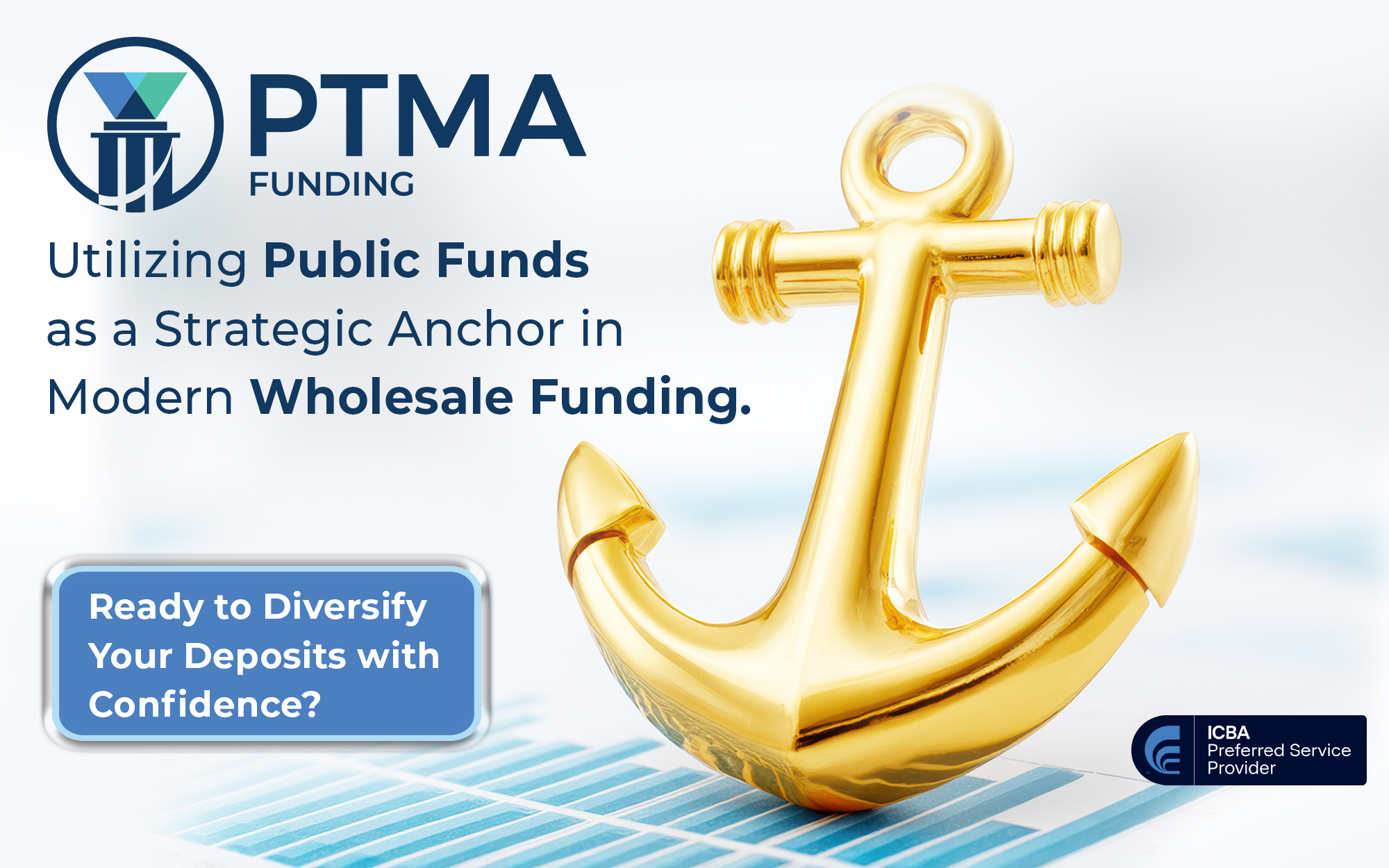As your bank grows in asset size, it’s vital to keep up with compliance regulations to meet the standards of each new threshold. By planning ahead and preparing your staff, the process can be seamless.
Leveling Up: How Community Banks Should Navigate Asset Size Growth Thresholds
September 06, 2023 / By Cheryl Winokur Munk
As your bank grows in asset size, it’s vital to keep up with compliance regulations to meet the standards of each new threshold. By planning ahead and preparing your staff, the process can be seamless.
Community banks are required to follow different regulations based on their asset size. As they get closer to reaching a new threshold, proper preparation can mean the difference between a smooth transition and a rocky one fraught with potential regulatory repercussions.
Thresholds exist for different regulations for different purposes. For example, banks with assets of more than $1 billion must navigate additional auditing, financial reporting and internal controls. Banks also face additional regulation at the $3 billion threshold and at the $10 billion mark, for example. These thresholds have evolved over time and will continue to evolve in response to industry changes and current events, such as multiple recent large bank failures, banking executives say.
More from ICBA
Looking toward the $1 billion mark? Watch for 2024 dates to be announced soon for Community Banker University’s FDICIA Seminar. This will be hosted in a virtual format; registration will open soon.
Whatever the threshold, community banks need to be prepared. This means thinking ahead—well in advance of reaching the next level.
“Banks approaching the various asset thresholds must plan far in advance, because the learning curve can be steep and the process of making necessary changes can be lengthy,” says John M. Geiringer, partner in the financial institutions group at Barack Ferrazzano. He advises banks on regulatory, governance and investigative issues.
Here are several tips to help community banks prepare to meet a higher asset threshold.
Start with a culture of compliance
Community banks should start by making sure they have a strong compliance management process, says Ben Baboval, chief compliance officer for $2 billion-asset MainStreet Bank in Fairfax, Va. This includes ensuring that:
The bank knows its compliance responsibilities
Employees know their respective compliance roles
Proper risk assessments are being done
There are tools for monitoring for regulatory changes so the bank can anticipate new requirements.
Baboval says, “If you don’t have that initial groundwork, it’s all going to fall on its face from a regulatory change management perspective.”
Smaller banks, too, should keep in mind that just because they aren’t required to meet certain thresholds, there’s nothing to say they can’t adopt them as a best practice. In fact, “formal asset threshold requirements tend to trickle down informally to smaller institutions, as examiners look to those requirements as worthy benchmarks,” Geiringer says.
Accordingly, some community banks may voluntarily decide to adopt certain formal requirements for larger institutions as best practices for themselves, he says.
The Congressional Research Service offers an online guide, which is a good starting point for community banks looking to understand more about their responsibilities at different thresholds. They may also want to consult with their legal department or other advisors.
A timeline for regulatory change
Community banks need to get the wheels turning ahead of an approaching threshold, but how far in advance can vary. A general rule of thumb for community banks is to plan six to 12 months in advance, depending on the size of the bank and the complexity of the changes required, says Joseph E. Silvia, member of Detroit-based law firm Dickinson Wright, who represents financial institutions on regulatory and other matters.
“It takes people time to coordinate and get meetings set up and get into the nitty gritty,” Silvia says. “Starting earlier gives you more time and more flexibility at the bank to prepare.”
MainStreet Bank, for instance, started prepping two years before it would surpass the Community Reinvestment Act (CRA) threshold. When it came time to start reporting the necessary data in 2023, it had adequately tested and implemented the new processes necessary for its enhanced reporting requirements.
For $800 million-asset Bank of Charles Town in Charles Town, W.Va., a similar transition took about a year, says Larissa R. Carson, vice president and compliance, BSA and CRA officer.
Richard Kloch Jr., a financial services partner at Crowe LLP, offers another example of a community bank with about $500 million of assets that was aiming to grow organically to more than $1 billion in assets. This bank started planning several years in advance and hired a consultant for an outside perspective, since reaching the new threshold would bring certain auditing requirements under the Federal Deposit Insurance Corporation Improvement Act of 1991. The bank wanted to give itself enough time to get all the necessary pieces in place and do a full year’s dry run, well before the requirements set in, Kloch says.
Sometimes community banks hit new thresholds because of organic growth, but at other times, it’s due to an acquisition.
That was the case when CorTrust Bank in Mitchell, S.D., bought First Minnesota Bank in August 2019, bringing the combined entity to more than $1 billion in assets. To get a jump start, the bank started looking in early 2019 at what the new threshold would require, and this process continued in the 16 months after, says Amy Johnson, vice president and retail operations manager at CorTrust Bank, which now has $1.6 billion in assets.
Expect a labor-intensive process
When preparing to reach a new threshold, there can be a lot of moving pieces, says Christina Hunt-Fuhr, senior director of Klaros Group, a consulting firm that advises banks on regulatory issues. Getting the essential details and any wrinkles ironed out takes time and staff commitment.
Points to consider include the labor involved with transitioning to a new threshold. Staff members may be performing double duties, or it could mean hiring more employees, which can also take time to find:
New or additional vendors to make compliance’s job more streamlined
Any additional training that needs to happen, as well as who will need that training and how it will be accomplished
What additional monitoring and controls will be necessary and what additional data will need to be tracked
What procedures need to be changed and who is responsible
“You have to have comprehensive change-management processes in place. These things don’t happen overnight,” says Hunt-Fuhr, who’s also a former bank examiner.
When Bank of Charles Town was in the process of crossing the new CRA threshold, Carson was responsible for making sure the bank had new processes in place so it could meet the additional requirements and identify the community development transactions for purposes of the new threshold. This meant keeping management abreast of the upcoming regulatory changes and developing an internal implementation team with key subject matter experts and representatives from information technology to discuss the new requirements and what the process for identifying community development activities would look like in the future.
There was also significant work in identifying examples of what regulators consider community development, partnering with commercial lending to determine how processes would change, and determining potential vendor and staffing shifts, Carson says.
In preparation for its new asset threshold, CorTrust added a handful of people to its compliance committee and reviewed its various procedures and processes to see what needed to change, Johnson says.
For example, the community bank knew its audit scope was going to be much larger, so the audit department had to beef up staff by several people and ensure its documentation was more robust, knowing examiners were likely to be more critical in this area, Johnson says.
Expect snags
While MainStreet Bank was still in the testing stage, it found some kinks in its new processes. Because it had started early, however, the bank was able to test for three-quarters of the year and clean up any issues it identified.
“Things come up that you maybe didn’t plan for; that’s why you need to give yourself a long runway when planning to reach a new threshold because you still need to do your day-to-day tasks.”—Amy Johnson, CorTrust Bank
“If you are able to get ahead of it as early as you are legally able to, it helps ensure you are ready when the time comes,” Baboval says.
CorTrust found the process took longer than expected, in part because 11 First Minnesota Bank branches needed to be converted to CorTrust’s core provider. There were also priorities the bank had to focus on at the same time it was preparing to reach its new asset threshold.
“Things come up that you maybe didn’t plan for; that’s why you need to give yourself a long runway when planning to reach a new threshold because you still need to do your day-to-day tasks,” Johnson says.
Track your progress
Baboval also recommends community banks build tracking mechanisms to help identify where they are with respect to meeting their new regulatory targets. This helps banks know what to change, what not to change and where gaps exist, he says.
Developing this type of tracking system while it was transitioning to a new CRA threshold gave MainStreet Bank a “reasonable assurance” it was on target to meet regulatory expectations, Baboval says.
Use available resources
Community banks should pay close attention to their regulator’s examination procedures for similar-sized institutions, says Brian Holland, partner at Lathrop GPM LLP and leader of the law firm’s financial services practice group. These procedures are generally published on the agency’s website, but community banks can also reach out to their regulator directly. Management or compliance should go through these procedures carefully so they know what is going to be analyzed and where they may be deficient.
For CRA compliance, as an example, community bankers can visit the Federal Financial Institutions Examination Council’s website to see examination procedures and public evaluations of other banks their size.
“CRA compliance can seem daunting to community banks, but this helps them see up front what regulators are going to be looking for,” Holland says.
It’s not all about the thresholds
Thresholds are important, but it’s easy for community banks to become so focused on the regulatory requirements they can’t see the forest for the trees.
There’s no regulation, for example, that says at $250 million in assets you should have X number of compliance personnel, and at $300 million you should have Y.
“You have to check the box and devote the resources to checking the box, but it’s also worth pulling back and using thresholds as a guideline as to what the bank should look like at the next level,” said Peter Weinstock, partner with Hunton Andrews Kurth LLP in Dallas and co-practice group leader of the firm’s financial institutions section.
This means benchmarking against well-run institutions of similar sizes and seeking input from industry experts and regulators about holistic issues, so community banks can better understand how to prepare for their future needs.
Heightened Expectations for Bigger Banks
Banks in the $7 billion to $8 billion range have to plan for even more or different types of regulation once they reach $10 billion, such as examination by the Consumer Financial Protection Bureau (CFPB).
This shift requires even more advanced planning, says Timothy Burniston, senior advisor of regulatory strategy at Wolters Kluwer. They’ll need a minimum of a few years to prepare, which includes becoming familiar with how the new regulator is going to operate, its expectations, how its supervisory approach might differ from other regulators the bank is accustomed to, and asking clarifying questions.
“Getting a good sense of the expectations will help you in the planning process so you can see what you need to do and decide how much time it will take you to do it,” Burniston says.
Additionally, as organizations grow, regulators become more particular about senior management and board involvement. Compliance management also becomes more closely scrutinized, and bigger banks need to be especially mindful to have appropriate controls for mitigating risk and reporting to management.
There may be additional technology and staffing considerations. These are areas regulators tend to focus on regardless of size, but “the larger a bank gets, all these things just become [that] much more intensified,” Burniston says.
Understanding The New CRA Asset Requirements
From the end of 2019 to the start of 2022, the total deposits of all U.S. commercial banks grew by nearly $5 trillion, due in part to unprecedented balance sheet growth and ongoing consolidation. This has propelled some community banks into a new Community Reinvestment Act (CRA) asset-size category sooner than expected.
The latest asset-based adjustments took effect Jan. 1. For community banks, this means understanding the new asset definitions that could apply to them.
Small bank: Under the new rules, a “small bank” is one that, as of Dec. 31 of either of the prior two calendar years, had assets of less than $1.503 billion. The previous small bank threshold was $1.384 billion.
Intermediate small bank: An “intermediate small bank” is one with assets of at least $376 million as of Dec. 31 of both of the prior two calendar years and less than $1.503 billion as of Dec. 31 of either of the prior two calendar years. The previous threshold was $346 million.
Large bank: “Large banks,” meanwhile, are those with assets of at least $1.503 billion as of Dec. 31 of both of the prior two calendar years.
Subscribe now
Sign up for the Independent Banker newsletter to receive twice-monthly emails about new issues and must-read content you might have missed.
Sponsored Content
Featured Webinars
Join ICBA Community
Interested in discussing this and other topics? Network with and learn from your peers with the app designed for community bankers.
Subscribe Today
Sign up for Independent Banker eNews to receive twice-monthly emails that alert you when a new issue drops and highlight must-read content you might have missed.
News Watch Today

Join the Conversation with ICBA Community
ICBA Community is an online platform led by community bankers to foster connections, collaborations, and discussions on industry news, best practices, and regulations, while promoting networking, mentorship, and member feedback to guide future initiatives.













